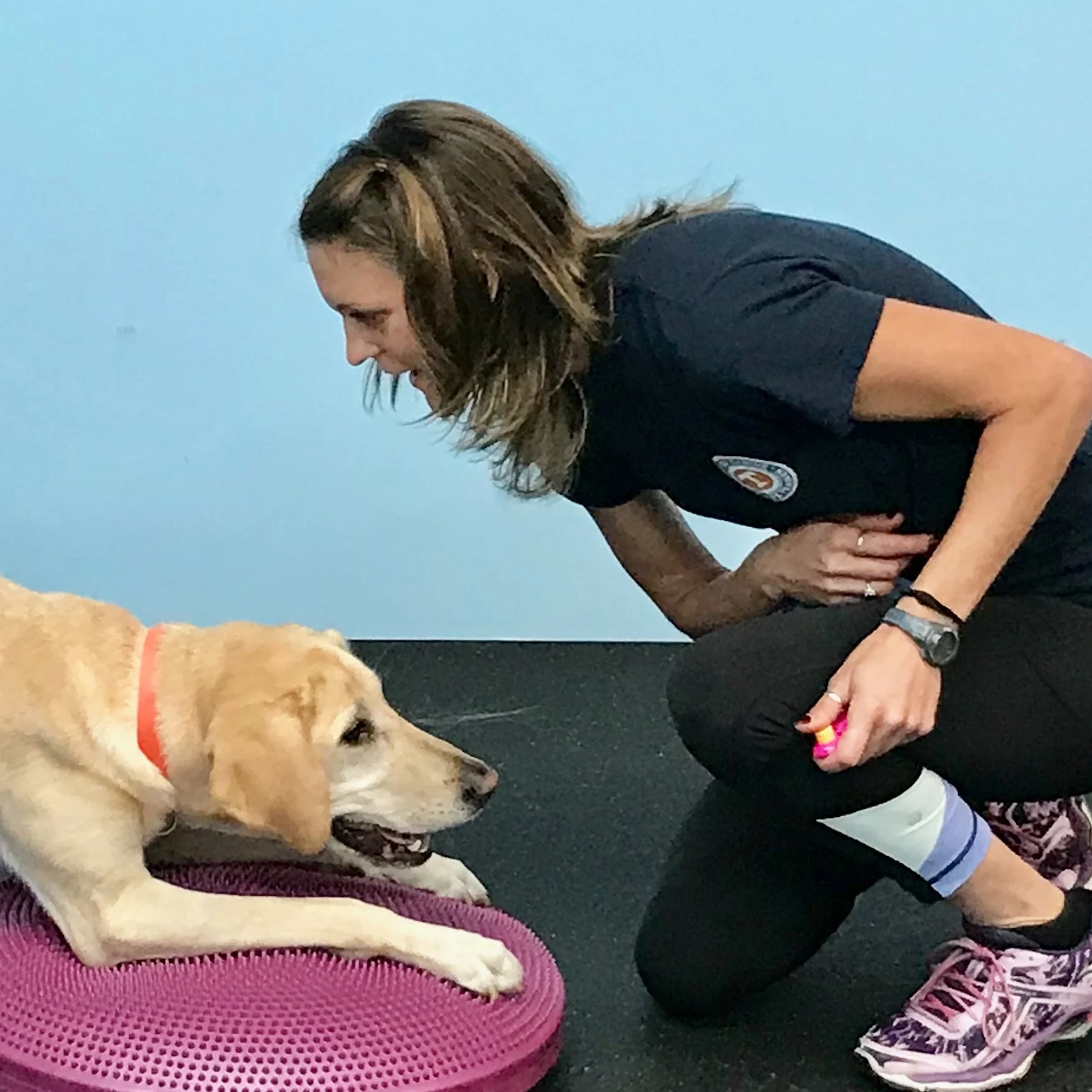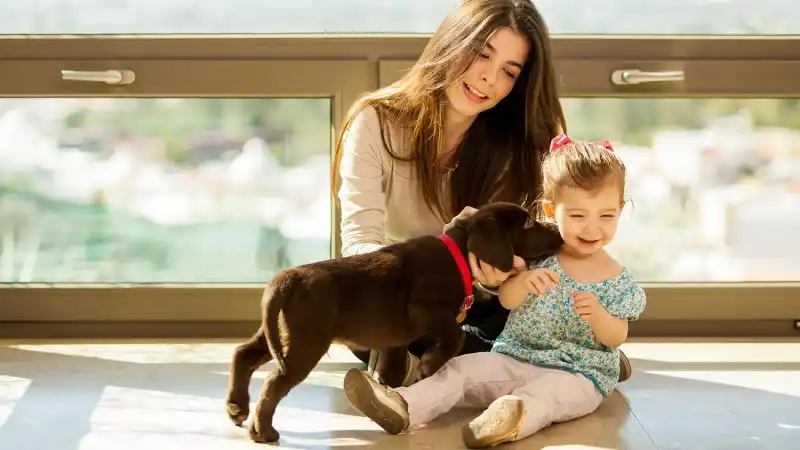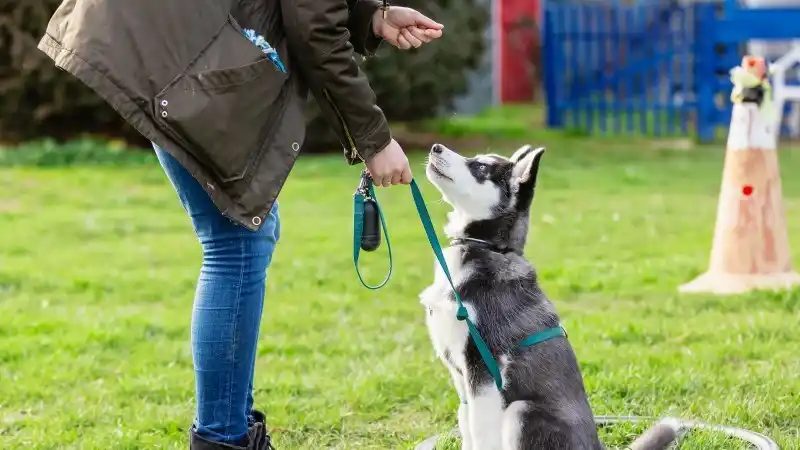Family Dog Obedience: Use the "Elevator" Method
Use the "elevator" method while learning new skills to teach your dog that whether you're down at his level or standing, a command should be held until released!

Are you teaching your dog to lie down using a treat in front his nose? Luring is a popular method to train “down.” Next, you begin to reduce the lure – you increase the distance between the lure and your dog’s nose – so that your dog is not forever reliant on having a treat in front of his nose. Your dog also will need to acclimate to your standing in a full, upright posture instead of kneeling or crouching. Read on to learn how to use “the elevator method” to master the down position!
Why Use the Elevator Method?
If you make a skill – such as down - too difficult, your dog may break out of their down position before hearing their release word (“ok”). The release word generally means that the exercise is finished, and the dog is free to move. In my classes, my students teach their dogs to hold the position until the release word is given. Essentially, this is teaching a version of “stay” without needing to say “down” and “stay” to indicate to your dog that he should hold the position.
If you have been kneeling to lure your dog into the down position and subsequently treating your dog for performing and holding the down position, your dog may interpret that your upper body bending forward and knees bending are part of the body visual cue for “down.” Thus, if you abruptly start to remain upright in a normal human posture, your dog may either not go into the down or may pop out of the down into a stand position because he is confused or wants to follow you. After all, suddenly his visual picture has changed dramatically.
You can start gradually changing the visual picture for your pup using the elevator method. Be an elevator to help your dog transition from seeing you at a lower level to having you in an upright position.
How to Use the Elevator Method
Basement Position
Say your verbal cue for “down” and lure your dog into a down position or just use the hand signal, which may be a hand pointing downward to the floor with a straight arm while you crouch to the floor. Tell your dog “yes” for getting into the position and deliver a treat.
First Floor
Next, extend your knees and body up just two inches – this is the first floor - and quickly return to the basement. Treat your dog for holding the down position. Release your dog (“ok”). If your dog does not get up, gently encourage him to stand up and take a few steps by guiding him with his leash. That guidance will help him understand that “ok” means he can change position.
Second Floor
Now start the elevator game again. Repeat the sequence, but instead of releasing your dog when you return to the basement from the first floor, go to the second floor. Your second floor may be a few inches above your first floor. Return to the basement, treat, and release.
Top Floor
By doing small approximations, you eventually work up to the penthouse – the top luxury floor is your full upright standing position!
Advancing the Elevator Game
Gradually increase the difficulty for your dog. Ensure your dog is successful consistently at the first few floors before proceeding to the top floor.
Over time, you can mix it up! Try these variations to increase the challenge:
Vary how long your dog holds the down position – this could be one or 20 seconds. You should always give your dog enough treats so that he is able to accomplish the task of holding the position.
Modify the number of elevator trips during each down position. Sometimes you only take a couple of “elevator rides” up and down. Other times you do multiple elevator rides – this also increases your dog’s duration.
Pause your elevator for longer moments at the upper floor or in the basement. Your movements and treat delivery should be random and unpredictable to your dog – yet he continues to hold the down position because you are giving him enough reinforcement via treats and praise.
Release your dog from floors other than the basement. Your dog may be released when you are at the third floor or the penthouse.
Deliver fewer treats over time and still ensure that your dog is paid enough - in food - to perform the skill successfully. Check out this blog on weaning your dog off of treats!
What’s Next?
You can apply the same “elevator” game and baby step approximations to the sit and other positions, such as “bang, play dead.”

Jasey Day holds the Certified Canine Fitness Trainer (CCFT) credential through the University of Tennessee. She is a member of the Bobbie Lyons K9FITteam - a team of compassionate canine fitness instructors who actively teach others and continually expand their own knowledge. Since 2004, Jasey has taught a variety of workshops and classes on the following: Puppy, Canine Good Citizen/Family Pet, Advanced Family Pet, Canine Fitness, Canine Swimming, Rally, and Agility. In addition, Jasey has earned over 60 titles in Dock Diving, Agility, Rally, CGC and Trick Dog. Jasey has worked full time for the American Kennel Club since 2007 and teaches at Care First Animal Hospital in Raleigh, NC. Jasey’s Labrador Retrievers spend their free time hiking, training, and snuggling with Jasey.
READ MORE ARTICLES

